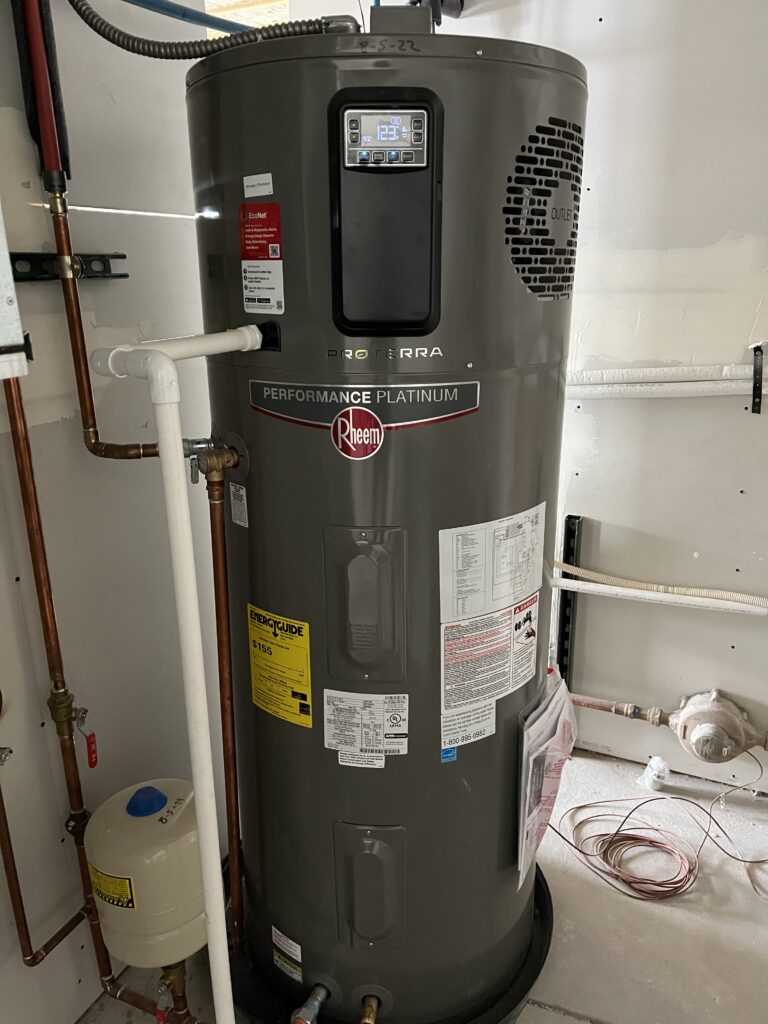Utilizing a heat pump hot water heater was a no-brainer when we were trying to decide how to heat our water. This water heater is the most efficient on the market currently. It uses the same technology that our mini split system does so it takes the heat from the surrounding air and uses that to heat the water in the tank.
Some topics I’ll go over briefly will include:
- The efficiency of a heat pump water heater
- Where should a heat pump water heater be installed
- Will heat pump water heater make basement cold?
- Different modes available
The efficiency of a heat pump water heater – The efficiency of this unit is measured in a format known as the Uniform Energy Factor, aka UEF. The higher the number, the more efficient that unit is. For our heater, the UEF is 4.05. In English, that basically means if I pay $1 for hot water, I’ll get $4.05 back in hot water when I use it. Talk about a good return on investment! Other electric water heaters (non-heat pump) will have a UEF of around 0.92 and a natural gas water heater (tanks design) is typically 0.68. Those are not quite as good investments…
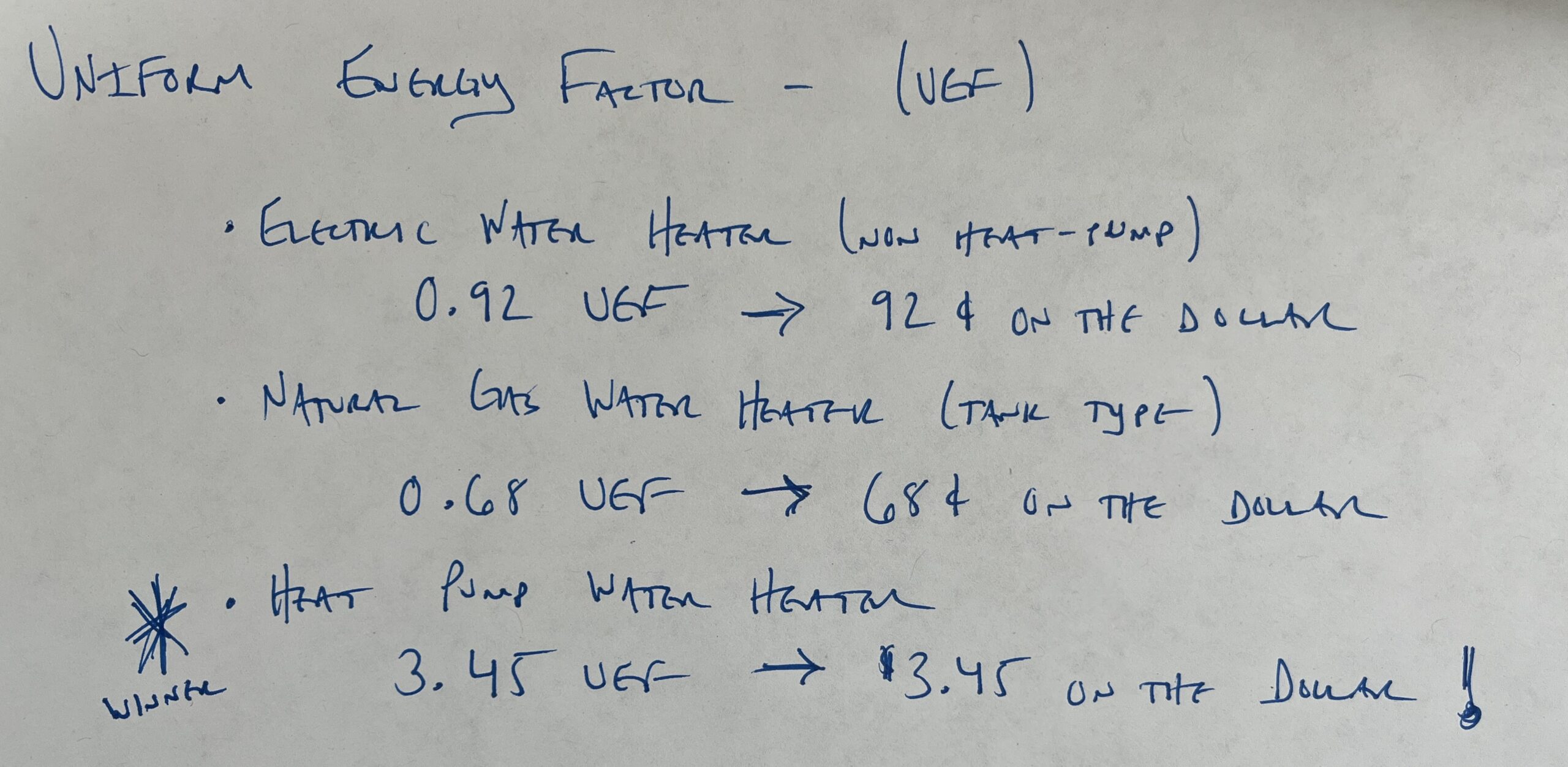
Where should a heat pump water heater be installed – Keeping the hot water tank to reduce hot water line lengths is ideal. Typically these tanks are put into a mechanical room or closet. Per Rheem’s installation instructions, they state the following:
- Locate the water heater in a clean dry area as near as practical to the area of greatest heated water demand. Long un-insulated hot water lines can waste energy and water.
- Place the water heater so that there is access to replace the filter on top as well as room to remove the access panels.
- The water heater and water lines should be protected from freezing temps.
- Make certain the floor underneath the water heater is strong enough to sufficiently support the weight of the water heater once it is filled with water.
Will heat pump water heater make basement cold? It could, yes. The water heater will make the area around it cold because it is taking the heat from the surrounding air to heat the water, leaving cold air in its wake. In a cooling-dominated climate, this is essentially free AC. In a heating-dominated climate, however, there are some things to consider.
- Put the water heater in a large mechanical room where the cold air won’t affect surrounding areas. Even better, as we did in our house, we placed the deep freezer in the same room so that the two pieces of equipment can supplement one another. The freezer likes the cold air from the water heater and the water heater likes the warm air given off from the freezer.
- You can duct the cold air to the exterior.
- You can duct the cold air to the kitchen, i.e. under a fridge, as the kitchen is often the warmest spot in the house.
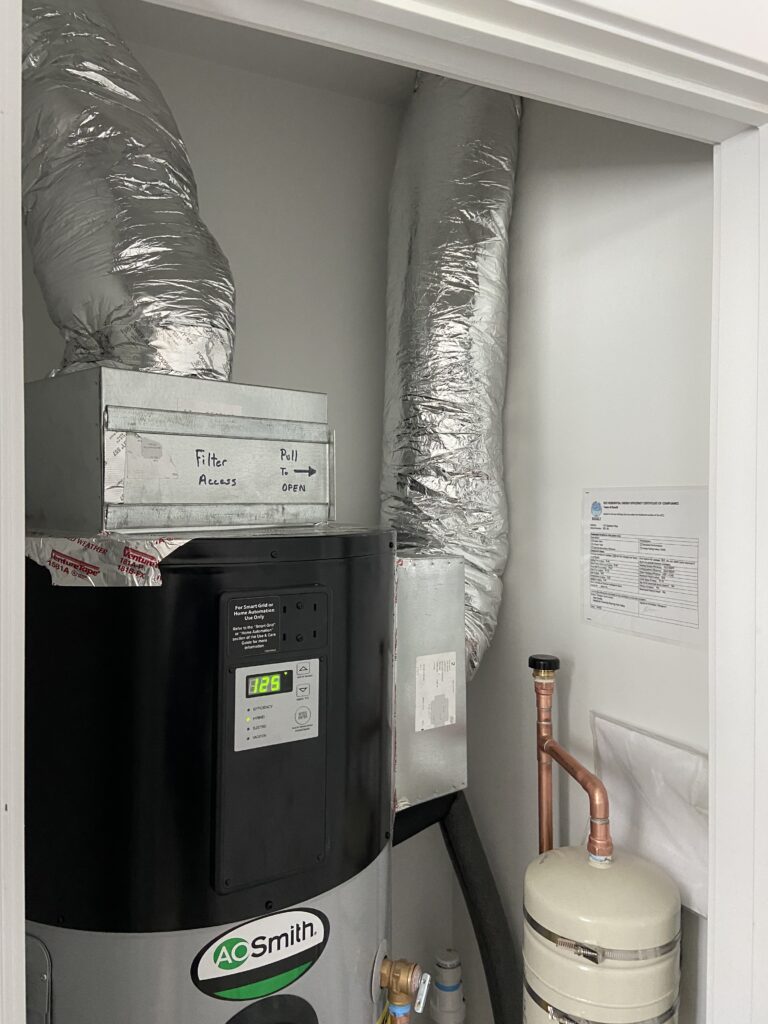
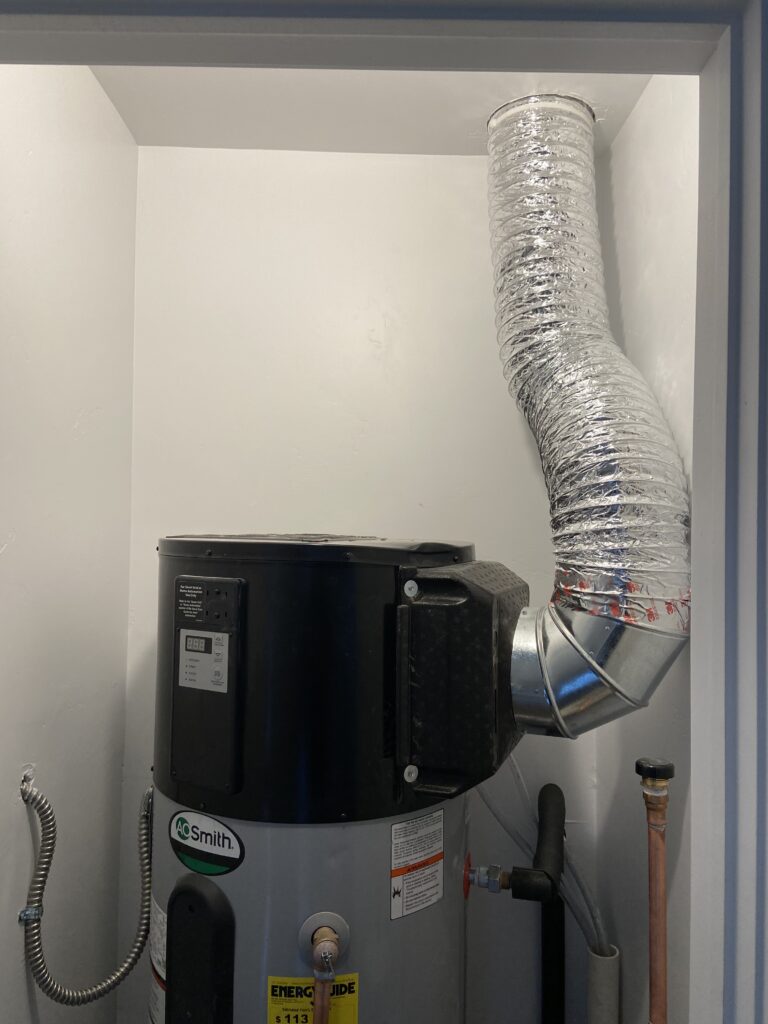
The water heater needs an adequate air volume to operate efficiently – This is related to the item above and if the volume is not adequate, then it will affect the efficiency of the unit. Some ways to make sure the unit has enough air to breathe, you can utilize the following:
- Use a louvered door in the room that the water heater is located.
- Ensure the room the water heater is located in is the required size per the manufacturers instructions.
- Fully duct the water heater, which includes the supply AND the exhaust, photo on the right.
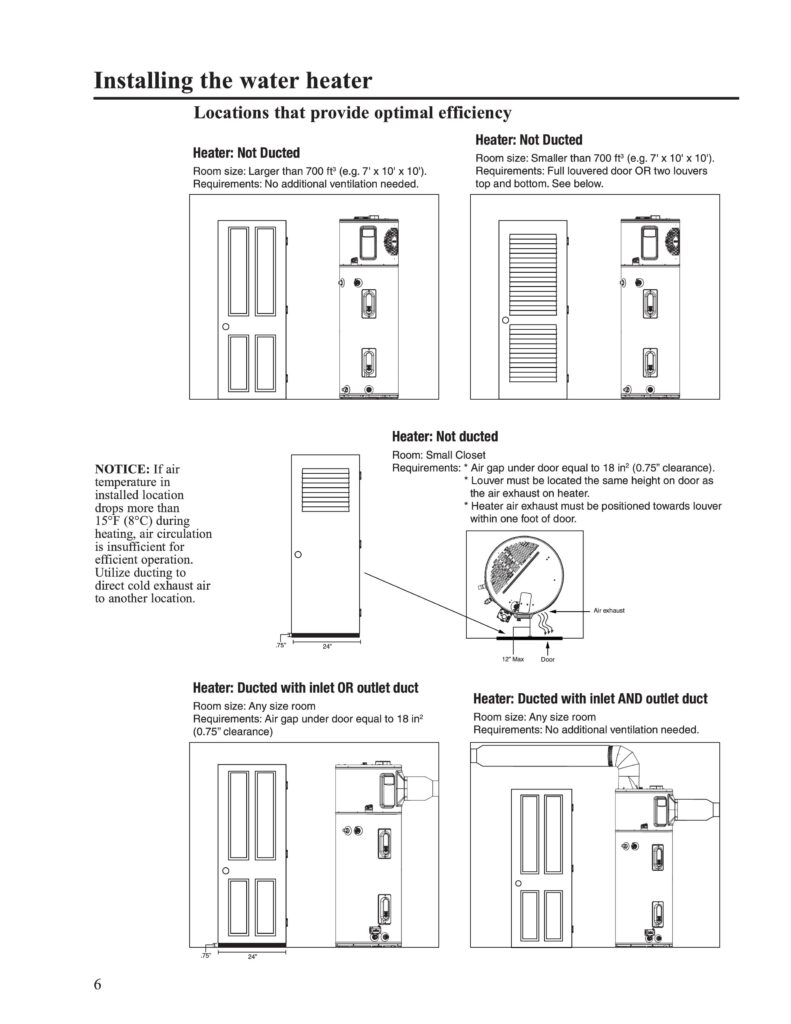
Different modes of the unit – The Rheem unit includes heat pump only, “energy saver” (which is the heat pump mode with electric backup), high demand, electric/gas and vacation. I haven’t had too much experience yet using these different modes, but am experimenting with the difference between the “heat pump only” mode and the “energy saver” mode as I would think the heat pump only mode would be more efficient than the energy saver. Stay tuned on that topic!
When having a lot of visitors in town, the 65 gallon tank was able to keep when we had six people visiting. Our showerheads have a flow rate of 1.8 gpm, so basically, that would allow for about 36 minutes of showering. When the water gets low (after checking the app), I would switch the water heater to high demand temporarily to help keep up if more hot water is needed.
The neat thing about the Rheem water heater, is that they have an app that you can change the status of the heater remotely. I was able to change the mode when I wasn’t home if I noticed the water was low when visitors were in town. Or if you went on vacation, you can switch it to vacation mode when you’re already physically (and probably mentally) in vacation mode. NOTE – Only change to “vacation mode” by scheduling the days (and times) that you’re gone using method shown on the right photo. If you change it when you’re in the screen shown on the left, it might get stuck in vacation mode.
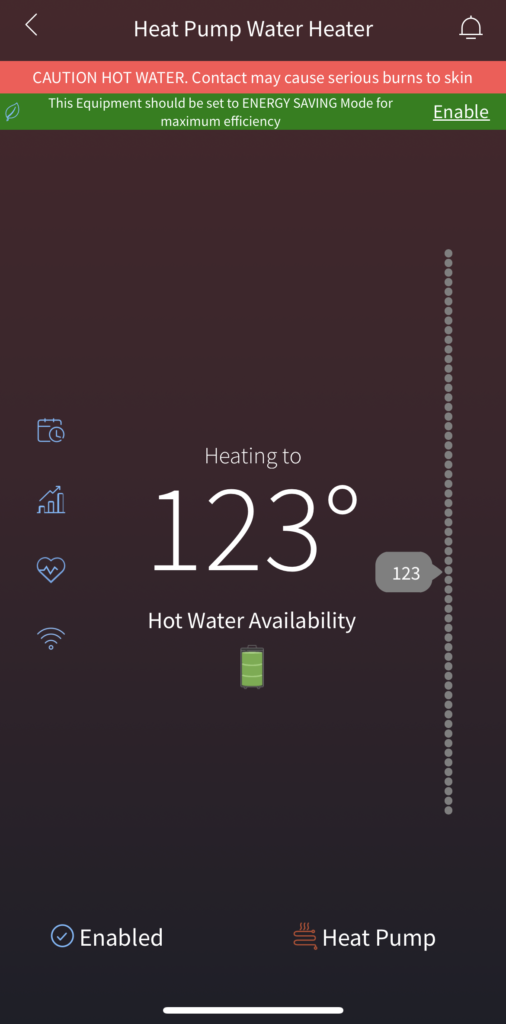
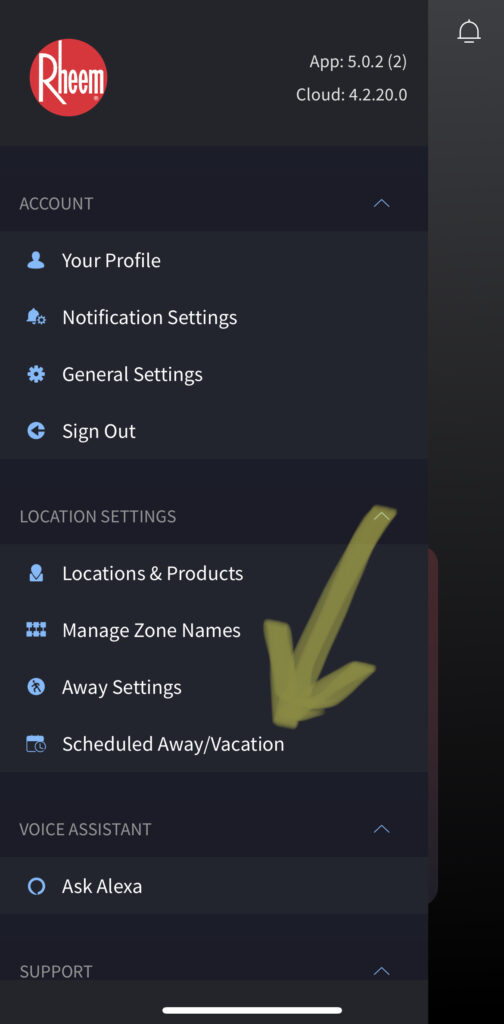
To conclude, we talked about the efficiency of a heat pump water heater, where a heat pump water heater should be installed, if the heat pump water heater will make a basement cold and the different modes available on the Rheem unit.
That’s all I have for now on the Rheem heat pump water heater. I hope you’ll consider one for your own project!


